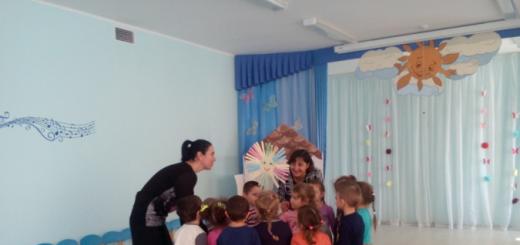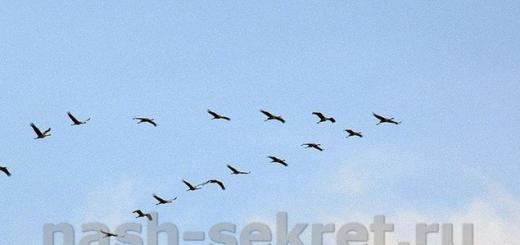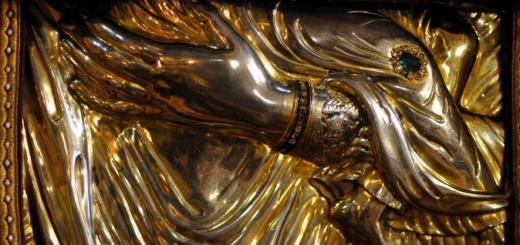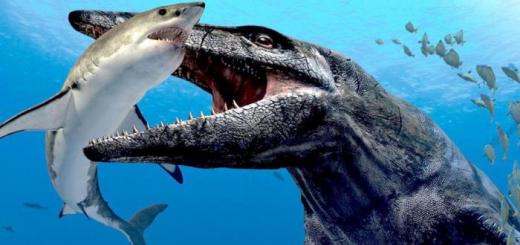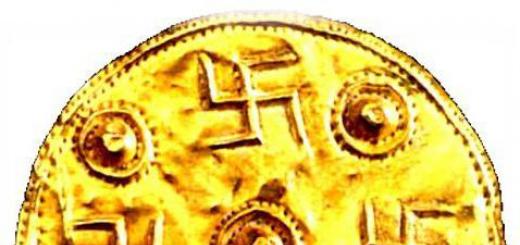July 28, 2016 - Day of the Baptism of Russia. On this day, the Russian Orthodox Church celebrates the day of Equal-to-the-Apostles Grand Duke Vladimir, the Baptist of Russia.
We bring to the attention of the readers of the site a chapter dedicated to the Holy Equal-to-the-Apostles Prince Vladimir from the book by A. Trofimov “The Icon of the Mother of God Hodegetria of Korsun (Ephesus) in the fate of Russia”.
KORSUN AND ANCIENT RUSSIA
Khersones was a special city for Byzantium. It became special for Russia too.As the Radziwill Chronicle testifies, even Prince Igor went to Korsun. In 943, he “made up many warriors ... and went to the Greeks in ships and on horseback, wanting to take revenge. Having heard this, the Korsun people sent to Roman, saying: “Countless Russian ships are coming, the ships covered the sea” ... Having heard this, the tsar sent the best boyars to Igor, asking and informing: “Do not come, but take the tribute that Oleg received, and I will add more to that tribute." The squad advised the prince not to go to Korsun. "And Igor listened to them and ... taking fabrics and gold from the Greeks and for all the soldiers, he returned back and arrived in Kyiv."
But the city of Korsun did not enter the history of Russia with these events. The beginning of the centuries-old ties between Russia and Chersonesos was the military campaign of the Kievan prince Vladimir Svyatoslavich against Korsun.
RUSSIAN-BYZANTINE WAR OF 988 (CAPTURE OF KORSUN)
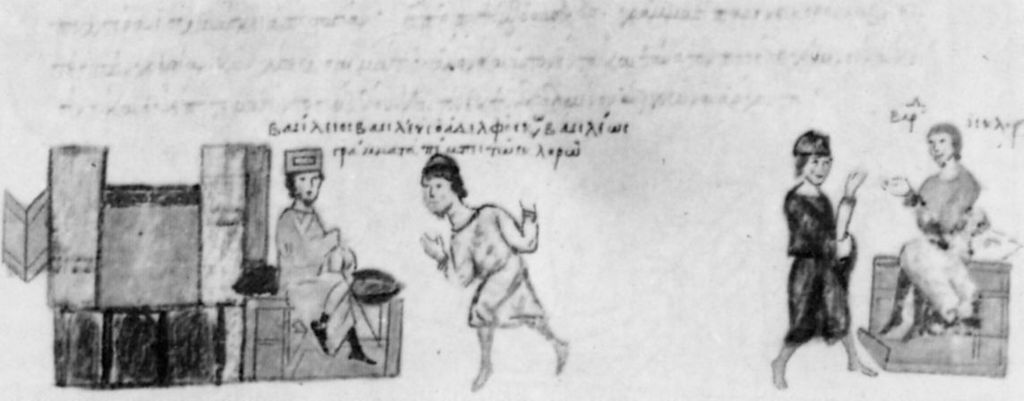 Let's remember the prehistory of the Korsun campaign. The imperial power in Byzantium was going through hard times: there was a stubborn struggle for the Byzantine throne. First, the commander of the eastern armies of the empire, Varda Sklir, rebelled against the emperors Basil II and his brother Constantine VIII. To fight him in the spring of 987, Basil summoned Varda Foka, who was imprisoned in a monastery on the island of Chios, popular among the troops - the nephew of their stepfather, Emperor Nicephorus II Foka. In September 987, Varda Phokas defeated and captured Varda Skliros, but in turn raised an uprising and proclaimed himself emperor. At the beginning of 988, the rebel troops approached the Byzantine capital of Constantinople, from which they were separated only by the Bosporus.
Let's remember the prehistory of the Korsun campaign. The imperial power in Byzantium was going through hard times: there was a stubborn struggle for the Byzantine throne. First, the commander of the eastern armies of the empire, Varda Sklir, rebelled against the emperors Basil II and his brother Constantine VIII. To fight him in the spring of 987, Basil summoned Varda Foka, who was imprisoned in a monastery on the island of Chios, popular among the troops - the nephew of their stepfather, Emperor Nicephorus II Foka. In September 987, Varda Phokas defeated and captured Varda Skliros, but in turn raised an uprising and proclaimed himself emperor. At the beginning of 988, the rebel troops approached the Byzantine capital of Constantinople, from which they were separated only by the Bosporus. 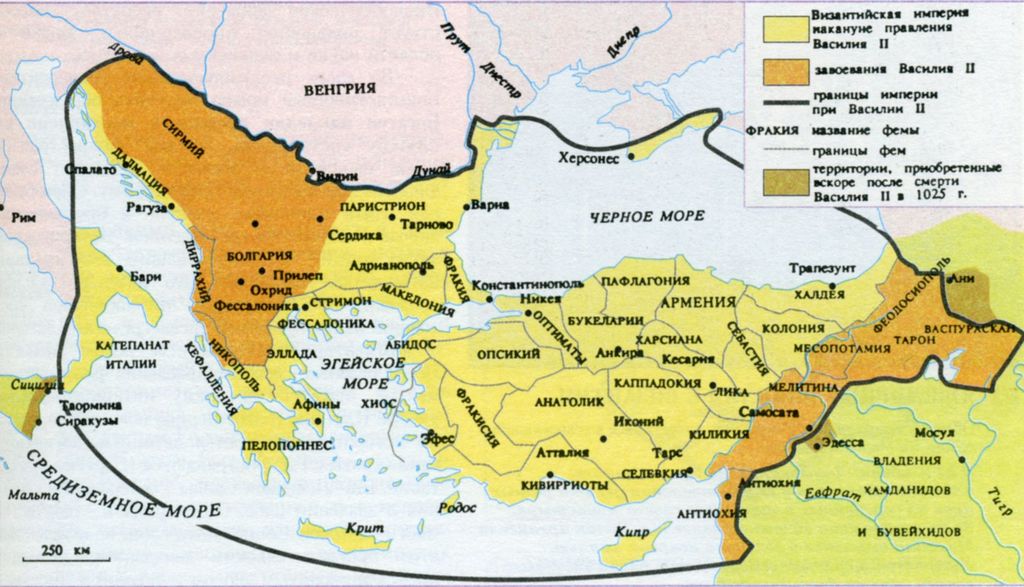
The position of Basil II was critical. Yahya of Antioch * described these events as follows: “And his cause became dangerous, King Basil was concerned about him because of the strength of his troops and his victory over himself. And his wealth was exhausted, and his need prompted him to send the Russians to the tsar - and they are his enemies - to ask them to help him in his present position; and he agreed to it. And they concluded an agreement among themselves on the matchmaking and marriage of the Tsar of the Rus to the sister of Tsar Vasily, after he set him the condition that he and all the people of his country be baptized, and they are a great people. And then the Russians did not reckon themselves to any law and did not recognize any faith ... And when the matter of marriage was decided between them, the troops of the Russians arrived and united with the troops of the Greeks, which Tsar Basil had, and went all together to fight Varda Foka by sea and land to Chrysopolis. And they defeated Fok.
* Christian writer John, better known by his Arabic name Yahya Ibn Said.

The amount of Russian military assistance to Byzantium was reported by the Armenian historian Stefan of Taron, a contemporary of Prince Vladimir. He called the figure of 6 thousand soldiers. In the spring of 988, a 6,000-strong armed detachment of Russians arrived in Constantinople. Along Yahyu, the combined forces of the Rus and Greeks defeated the troops of Varda Foka near Chrysopolis (on the Asian shore of the Bosporus) at the end of 988, and on April 13, 989, the Allies won a decisive battle at Avidok, during which Foka died unexpectedly, without even being wounded. Thus, the power over the entire Byzantine Empire remained in the hands of the brothers Basil and Constantine.
In all the reports of historians and chroniclers of that time, there is no explanation why an extremely useful and valuable ally for Byzantium, the Kyiv prince, turned for several months, and maybe for a whole year, from a friend into a formidable enemy and conqueror of Chersonesus *. Here, purely Russian news comes to our aid. All these testimonies briefly comprehend the Korsun campaign, as the conquest by Vladimir of the Byzantine princess Anna as his bride.
* There is another version that the city broke away from the empire, joining the rebellion of Varda Foki, and Vladimir acted against him as an ally of Basil.
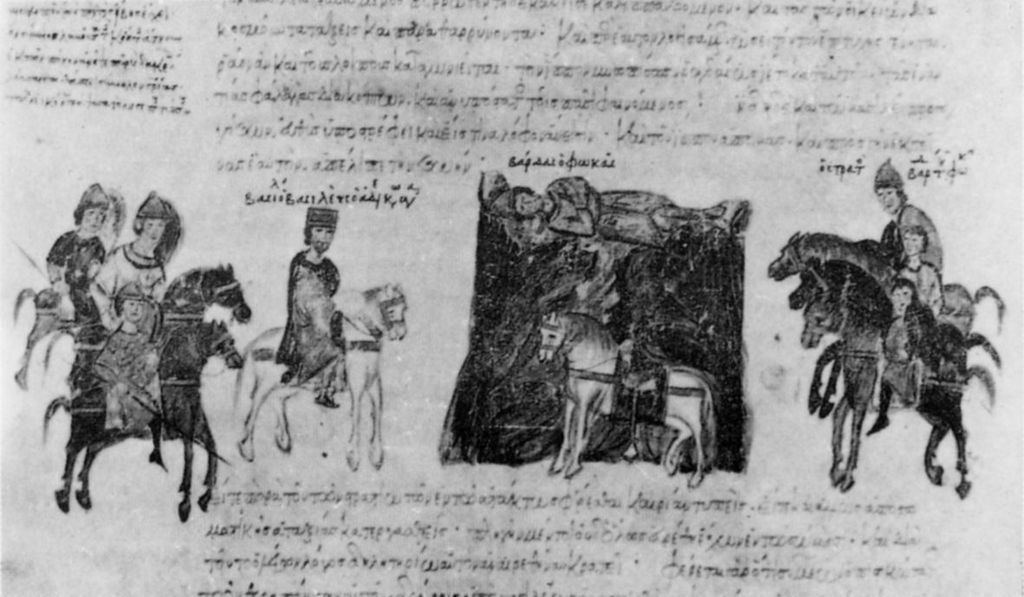
The Kyiv prince literally saved the Byzantine throne by fulfilling his part of the obligations to Emperor Basil. In gratitude for the assistance rendered, he promised Prince Vladimir the hand of his sister Anna. However, Vasily was in no hurry to fulfill the humiliating contract from the point of view of the Greeks: to marry the emperor's own sister to the "barbarian". Neither in the summer nor in the autumn of 988 did the promised bride appear in Kyiv. Therefore, it was natural to be outraged by this treachery of Vladimir himself. After all, he fulfilled his condition. Enraged by the deceit (or delay?), Vladimir moved his troops to Korsun in order to force the emperors to keep their word.
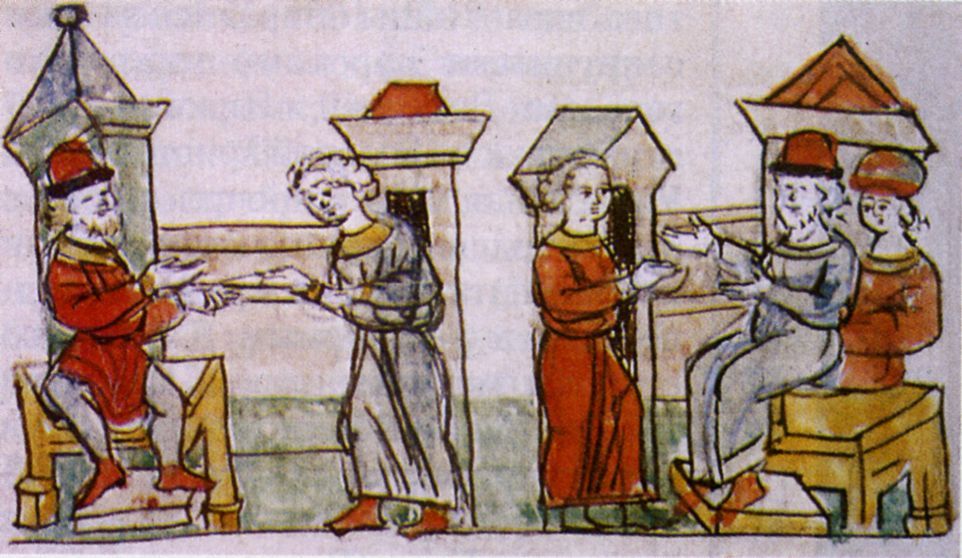
Only this kinship with the royal house opened up hopes for receiving from Byzantium all the benefits and secrets of its world-leading culture and the lasting entry of the Russian people into the circle of equal members of the Christian family of peoples.
The object of the attack was not the distant Tsargrad, but the closer and better known Chersonese to the Russians - an ancient Greek colony, the capital of the Byzantine Crimea. In his anger, the prince knew how to be prudent - undoubtedly, the expedition to the Crimea also pursued purely political goals: Russia hoped to strengthen itself on its Black Sea borders, which had recently been returned to the rule of Kyiv.
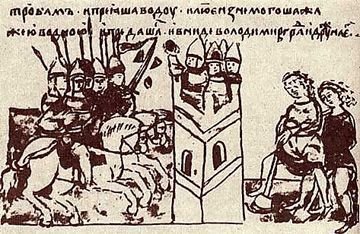
So, the Russian ships went down the Dnieper, went to sea, and, probably, at the very end of summer or at the beginning of autumn of the same 988, they appeared near Chersonesus. Vladimir's army numbered several thousand people (no more than five or six thousand on 150–200 boats). The military garrison and the inhabitants of Chersonesus, of course, knew in advance about the approach of the Russian fleet (for their patrol ships and ordinary fishing boats constantly cruised near the mouth of the Dnieper) and managed to prepare for the siege: they "shut themselves in the city," in the words of the chronicler.
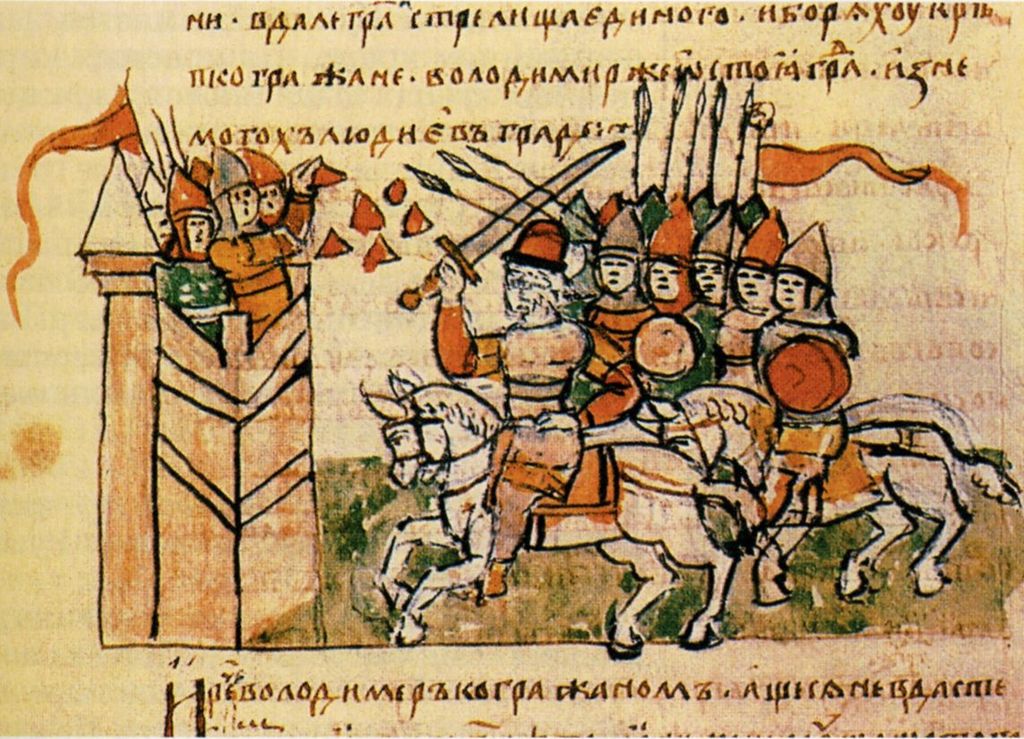
Russ were strong onslaught, pressure in the first battle. Skillful siege of fortresses was not among their virtues. Vladimir's army had neither wall-beating machines, nor stone throwers or flamethrowers capable of throwing Molotov pots and heavy stones into the besieged city. Unable to lure the enemy out of the fortress and take the city with a direct frontal blow, the Rus were forced to begin the siege, hoping for time and, as it seemed, inevitable famine. But the siege dragged on and laid a heavy burden not only on the besieged, but also on the besiegers. According to medieval Russian sources (various editions of the Life of Prince Vladimir), the Russians stood near the city from six to nine months, that is, autumn, winter and part of spring.
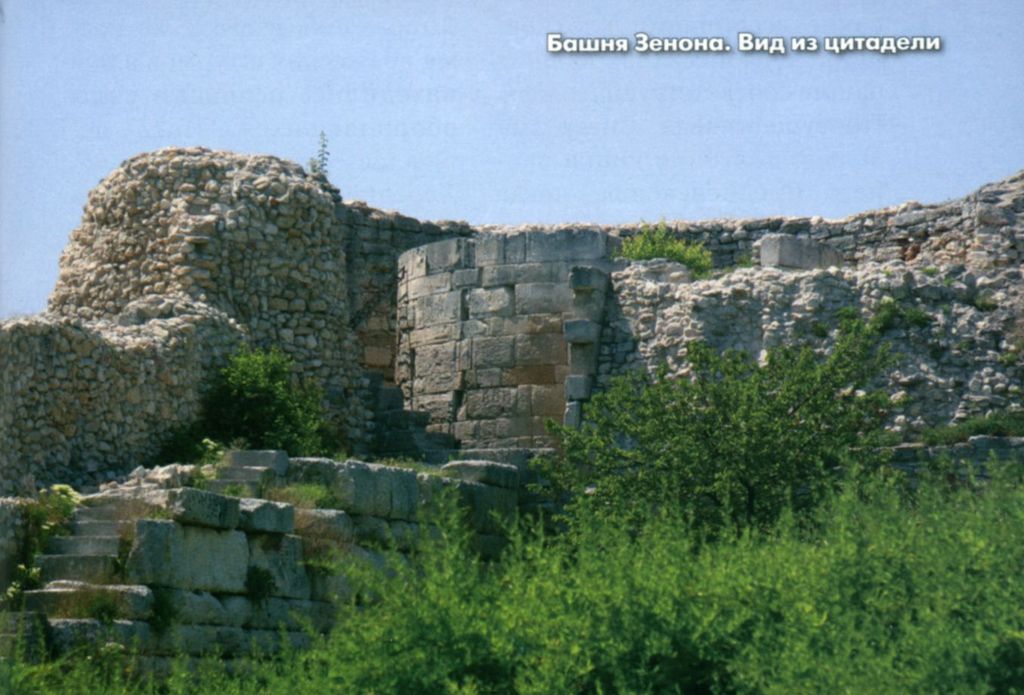
Chersonese was well fortified and was considered almost impregnable. The city was located on a peninsula connected to the mainland only by a narrow isthmus in the west. From the north, it was washed by the waves of the Black Sea, from the east, a bay ran deep into the coast line - the current Quarantine Bay of Sevastopol. In ancient times, a deep and narrow beam stretched to it, protecting the fortress from the south. The western part of the city was limited to the current Streletskaya Bay - not very deep, but vast bay. The stone walls of the city reached fifteen meters in height and three (and in some places even six to ten) meters thick. In the most dangerous areas, the fortress was surrounded by a second, additional battle wall.
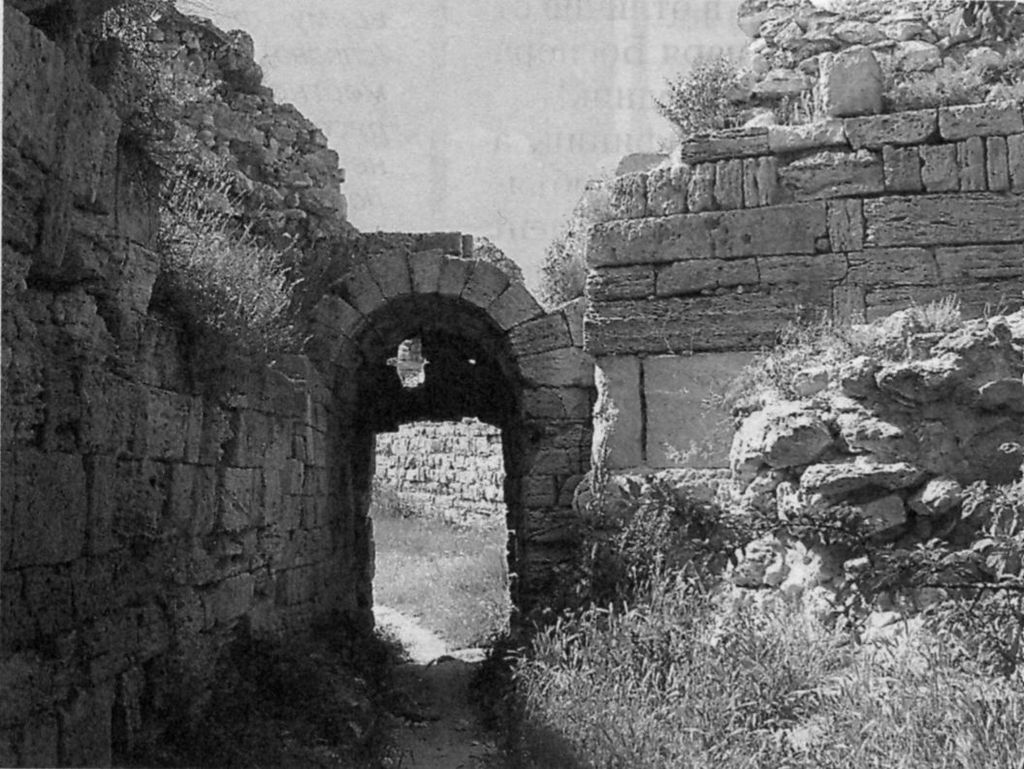
The earliest Old Russian chronicle of those that have come down to our time, The Tale of Bygone Years, describes the siege and capture of Korsun as follows:
“In 6496 (988), Vladimir went with an army to Korsun, a Greek city, and the Korsunians shut themselves up in the city. And Vladimir stood on the other side of the city at the pier, at a distance of an arrow from the city, and fought hard from the city.
Vladimir laid siege to the city. People in the city began to tire out, and Vladimir said to the townspeople: “If you don’t give up, then I’ll be idle for three years.” They did not listen to him, but Vladimir, having prepared his army, ordered to pour an embankment to the city walls. And when they poured, they, the Korsunians, having dug up the city wall, stole the poured earth, and carried it to their city, and poured it in the middle of the city. Warriors sprinkled even more, and Vladimir stood.

And then a certain Korsunian husband, named Anastas, shot an arrow, writing on it: “Dig and cross the water, it goes through pipes from the wells that are behind you from the east.” Vladimir, hearing about this, looked at the sky and said: “If If this comes true, I myself will be baptized!” And immediately he ordered to dig across the pipes and took over the water. The people were exhausted from thirst and gave up.”
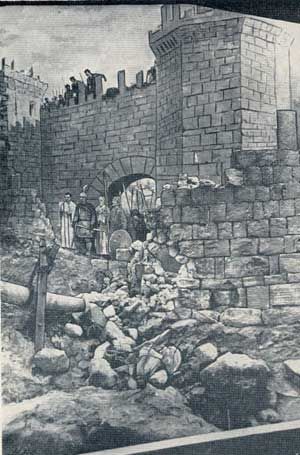
The siege of the city was exhausting. The Korsunians, according to the chronicle, desperately defended themselves. According to the annals, Anastas, a Korsunian, assisted the Russians - a completely historical figure, later one of the closest associates of Prince Vladimir. He was probably a priest. Upon his return to Kyiv, Vladimir will make Anastas the head (rector?) of the Kyiv Church of the Tithes and entrust him with the church tithe collected from the entire princely "estate".
The chronicle story was confirmed during archaeological excavations carried out in Chersonese. Archaeologists discovered a water pipe, which the Chersonites used for several centuries. During the time of Vladimir, ceramic pipes led along gutters to a source located south of the city. In the city itself, pipes approached a cistern that could hold about 4-5 thousand buckets of water. After the cessation of water supply to the city, the cistern reserves (if it was full by that time) could only last for two or three days. Then the Chersonites had to surrender.

A slightly different version of the campaign against Korsun is described in the Life of Vladimir of a special composition. According to him, at first Vladimir asked for himself the daughter of the "prince of the Korsun city", but he contemptuously refused the pagan. Then the offended Vladimir gathered an army of "Varangians, Slovenes, Krivichi, Bulgarians with black people" and moved to punish the offender. During the siege, a Varangian from Korsun named Zhdbern (or Izhbern) sent an arrow to the camp to his fellow Varangians and shouted: “Bring this arrow to Prince Vladimir!” A note was tied to the arrow with the message: “If you stand with strength under the city for a year, or two, or three, you will not take Korsun. The shipbuilders come by the earthen way with drink and food to the city. Vladimir ordered to dig up an earthen path and three months later * took the city.
* According to other testimonies after six months.

The city surrendered to the mercy of the winner, surrendered without pronouncing any conditions, because the inhabitants - regardless of their position and wealth - were exhausted and powerless before the "water thirst" that was equally terrible for everyone. They only asked for their lives. But the prince of Kyiv promised to save everything - life, property, freedom ... Modern archaeological research confirms the fact that the townspeople themselves opened the gates of the city: there are no traces of large destruction of the walls and significant fires.
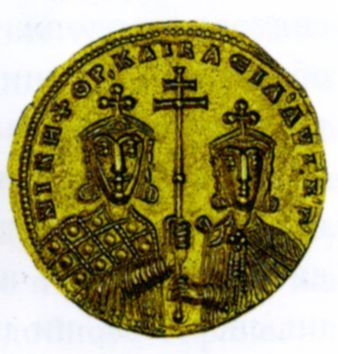
Having taken the city, Vladimir sent a letter to Constantinople with his demands: “I have taken your glorious city, and hearing that you have a sister, I ask that they give for me and thereby establish the eternal world. If you don’t do this, then I intend to go to Tsaryugrad, and maybe the same (I’ll do the same to this.” After a while, Princess Anna arrived in Chersonesus with a magnificent retinue and rich gifts. As it is written in the “Tale of Bygone Years” .
The Russians could reach the capital of the Empire in just three or four days. Vladimir had at his disposal not only light boats, but also the Chersonese fleet. Consequently, the threat contained in the words of the prince was very, very serious, which they could not but understand in Constantinople.

As compensation for the hand of the princess (in Russian, “veno”), Vladimir undertook to return Chersonese to the Greeks.
Vasily preferred to end the matter amicably, to fulfill the demand of Prince Vladimir. Anna's prayers this time were in vain. By taking Korsun and threatening Constantinople itself, Vladimir achieved his goal - the Byzantine princess arrived in Chersonese.
Anna was hardly much younger than Prince Vladimir. She was born on March 13, 963, two days before the death of her father Emperor Roman II. Empress Theophano was left with three children in her arms. She was the daughter of a simple innkeeper and could not count on the support of the nobility. Therefore, the beautiful Theophano summoned to Constantinople the military leader Nicephorus Foka, who supported the empress, and at the end of the mourning, married her and became emperor.
In those days, Germany extended its influence to Italy. The German king Otto I declared himself "Roman emperor", which put him on a par with the Byzantine basileus. He forced the princes of Spoleto, Benevent and Salerno, dependent on Byzantium, to take an oath to him. This caused a protest from the Emperor Nicephorus. Otto offered to settle the conflict by marrying his son to Princess Anna, who was not yet five years old. But the emperor did not consider the German prince worthy of Anna's hand.
After the assassination of Nicephorus, John Tzimiskes became emperor, and after his death in 976, Anna's brothers, Basil and Constantine, established themselves on the imperial throne. Then their mother returned to Constantinople, while Anna, from the age of fourteen, was brought up in accordance with strict rules worthy of a purple princess. But life at court was full of intrigue and overshadowed by rebellions of generals and wars with claims to the Byzantine throne. In the end, Princess Anna had to sacrifice her freedom in order for Byzantium to get back Chersonese and ensure peace on the northern borders.
BAPTISM OF PRINCE VLADIMIR
By the beginning of the Russian-Byzantine negotiations (986), Anna was 23 years old. Born in Porphyra, Anna was clearly aware of her high destiny. Fate was unlikely to prepare her for a happy marriage: extraditing her to a foreigner (even invested with imperial dignity, like Otto II) was insulting for reasons of prestige; in Byzantium itself, her possible husband became a contender for the Byzantine throne and - with the living brothers Vasily and Constantine - a threat to the integrity and tranquility of the Empire.
According to ancient chronicles, the Patriarch of Constantinople persuaded the princess to agree to this marriage so that Christianity would spread in Russia, promising her an afterlife bliss in return. The brothers said that, in case of refusal, thousands of her fellow citizens would die, and the country would be ruined. The fate of Princess Anna became common for many women from royal families.
Russian chroniclers tell how Anna desperately resisted the desire of her brothers to sacrifice her to their political calculations. “She didn’t want to go,” we read in The Tale of Bygone Years. - “As if full,” she said, “I’m going; It would be better for me to die here! ”... And they hardly forced her.”

Anna crossed the invisible line that separated her former life from her future. And who could have known then that her future would turn out to be not so much terrible as majestic ...
Late Russian chronicles cite the prayer of Princess Anna before sailing to Korsun, which undoubtedly has a literary origin. “She, turning her face to Hagia Sophia, began to cry, saying this prayer: “Oh, great philanthropy, lofty King of glory, Wisdom of the Father, even from a pure maiden she created a temple for herself, Son and Hand of the Most High! Stretch out, Father Almighty, your right hand from the midst of your core and consume the enemies of your Christ. For behold, Thy enemies have made a noise, and those who hate Thee have lifted up their heads and plotted against Thy people... But, Lord, Lord, do not leave my tears, from those who oppose Thy right hand, save me, Lord, like the apple of an eye, and cover me with Thy wing. For everything is subject to You, and Your glory is forever, amen. “And both brothers wept, looking at her, seeing her in anguish and sorrow.”
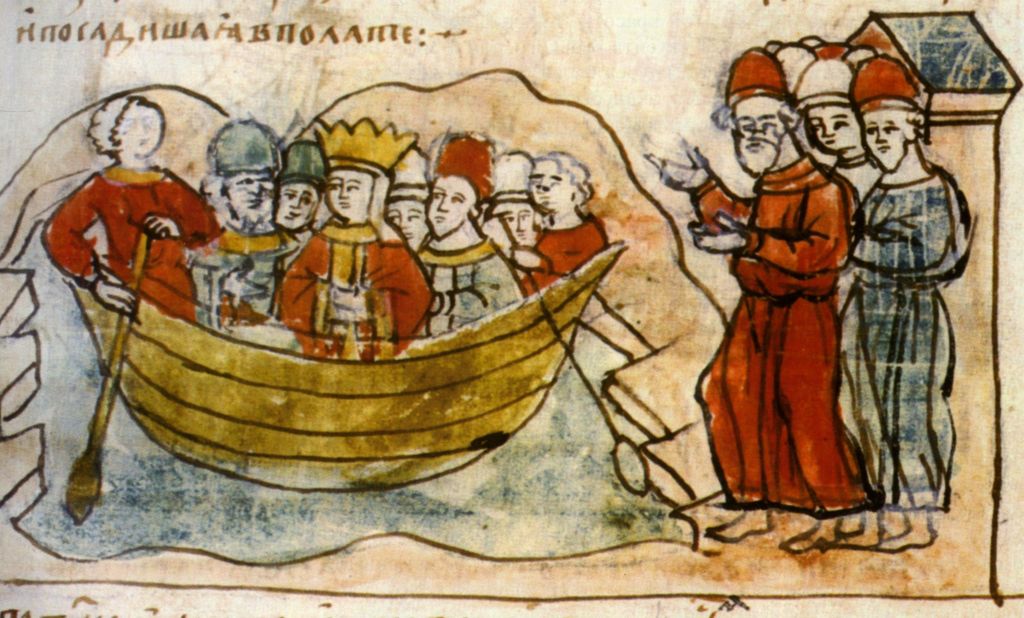
Having been blessed by the patriarch, she, with a large retinue, went to Chersonesos. Together with Anna, Greek dignitaries arrived in Korsun, as well as priests (“priests of the queen,” as they would be called in Russia), who were to accompany the princess to Russia. All of them, too, were placed with honors and comforts, as far as it was possible in a city that had just suffered a months-long siege.
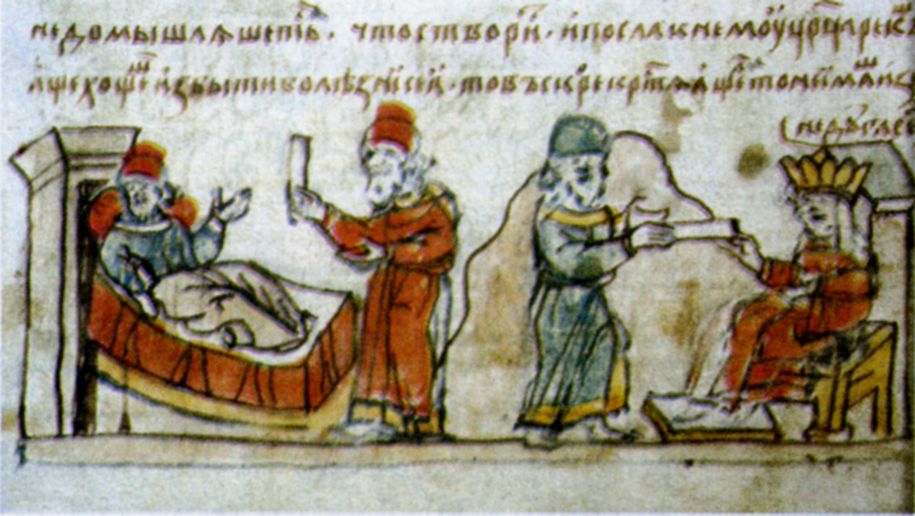
Preparations for the wedding have begun. However, according to the chronicle, new unexpected events preceded the marriage. “According to God’s dispensation,” we read in The Tale of Bygone Years, “Vladimir’s eyes hurt at that time, and he didn’t see anything, and he grieved greatly, and didn’t know what to do. And the queen sent to him to say: “If you want to get rid of this disease, then be baptized as soon as possible; but if you are not baptized, you will not be delivered from your infirmity.” And when he heard this, Vladimir said: “If this really comes true, then the God of the Christians is truly great!” And he ordered to be baptized. The bishop of Korsun with the priests of the tsaritsyns, having announced, baptized Vladimir. And when they laid a hand on him, he immediately received his sight. Vladimir knew his sudden healing and glorified God, saying: “Now I have come to know the true God!” His squad saw this, and many were baptized ... "

“[Vladimir] was baptized in the church of St. Basil, and that church stands in Korsuni-grad, in a place in the middle of the city, where the Korsun people bargain; Vladimirov’s chamber stands on the edge of the church to this day, and the tsarina’s chamber is behind the altar.” The usual Life of Vladimir calls the church in which the prince was baptized the church of St. James. Vladimir's baptism was followed by his marriage to Anna. Thus, from the Chersonese font, the path of the ascent of Prince Vladimir began from the great sinner to the great saint - the baptizer of Russia.

In the minds of ancient Russian chroniclers, the capture of Korsun is inextricably linked with the Baptism of Russia and preceded the spread of Orthodoxy among the Russian people. According to another version, the capture of Korsun in 989 took place after the baptism of Vladimir in 987 as a means of putting pressure on Byzantium in order to force it to fulfill its obligations. “And subsequently Tsar Vasily sent to him (Vladimir) metropolitans and bishops. And they baptized the king and all whom his lands embraced. And he sent his sister to him (Vladimir). And she built many churches in the country of the Russians.

The church marriage ceremony of Vladimir in Korsun was reflected in the minds of the people as his baptism in the same place. Grand Duke Vladimir himself, according to the words of the Monk Nestor the Chronicler, “was baptized in the church of St. Basil, and that church stands in the city of Korsun in the middle of the city, where Korsun people gather for bargaining ... After Vladimir’s baptism, the queen was brought to marry ... Korsun gave the Greeks as a vein (wedding ransom) for the queen, and he returned to Kyiv. And when he came, he ordered the idols to be overthrown, some to be chopped up and others to be burned.

